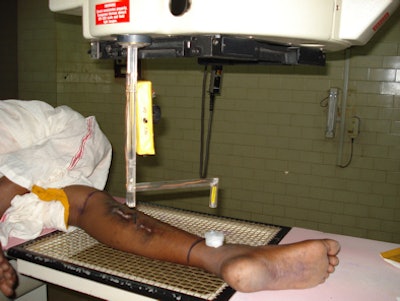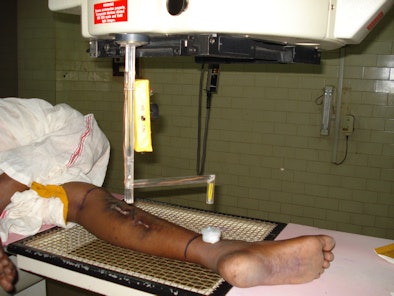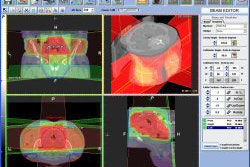
An inexpensive automatic sensor device that immediately halts external-beam radiotherapy (EBRT) treatment if a patient moves can result in more precise treatments, according to Indian researchers. The device prevents unnecessary radiation exposure to a patient's normal tissue in situations in which immobilization devices are not utilized.
In radiation oncology departments where immobilization devices aren't utilized, patients being treated for lesions in the extremities, the cervix, the breast, and the esophagus are expected to remain immobile once they are properly positioned. Patients inadvertently move, however, especially during lengthy treatment procedures.
To address this problem, researchers in India developed a device for use in countries where supplies of thermoplastic sheets and other types of immobilization devices are not readily available, or where the cost is prohibitive for patients who must purchase them. The researchers, from Madurai Medical College, Madurai Kamaraj University, and Kalasalingam University in Krishnankoil, published their study in the Summer 2008 issue of the Journal of Applied Clinical Medical Physics.
Their system consists of two components: an infrared-emitting transmitting sensor placed on the patient and a receiver placed on the radiation therapy system. The transmitting sensor is 2.5 cm in diameter, and it has a sticker on the bottom that enables it to be adhered to the anterior and lateral surfaces of a patient's body near the radiation delivery area. The receiver is attached to the collimator of a cobalt-60 machine and is aligned parallel to the infrared rays.
 |
| Images courtesy of S. Senthil Kumar, Ph.D., Goverment Rajaji Hospital. |
When a patient moves and the receiver fails to receive the transmitting signal, an audible warning sound will be produced in the EBRT console room, alerting the radiologic technologist to stop the treatment. Alternatively, the electrical circuit to the EBRT machine will be interrupted and radiation will be halted.
Researchers at Government Rajaji Hospital in Madurai tested the system in a retrospective evaluation of 86 consecutive patients who were not immobilized during radiation therapy treatments. The researchers found that 24 patients, or 27.9%, moved between 1.0 cm and 2.5 cm during the treatment sessions.
 |
Although patients are monitored closely by radiologic technologists using closed-circuit television at the hospital, slight movements may not be seen, especially during the time when a technologist walks from the treatment table to the EBRT console located in an adjacent room.
Patient movement during radiation therapy treatment
|
The sensor and alarm system is able to detect patient movements with a sensitivity of about 0.5 cm, according to S. Senthil Kumar, Ph.D., assistant professor of radiological physics in the department of radiotherapy at Government Rajaji Hospital and Madurai Medical College.
More than 100 patients receive treatment each day by only two technologists at Government Rajaji Hospital, so it was necessary to make the sensing system fast and easy to use. An additional benefit is that it has reduced the tension and stress associated with treating patients who are not immobilized, Kumar told AuntMinnie.com. It also enables the technologists to do their work more efficiently, because they don't have to continuously monitor patients with as much scrutiny as was required when the monitoring device was not utilized.
By Cynthia Keen
AuntMinnie.com staff writer
September 11, 2008
Copyright © 2008 AuntMinnie.com



















